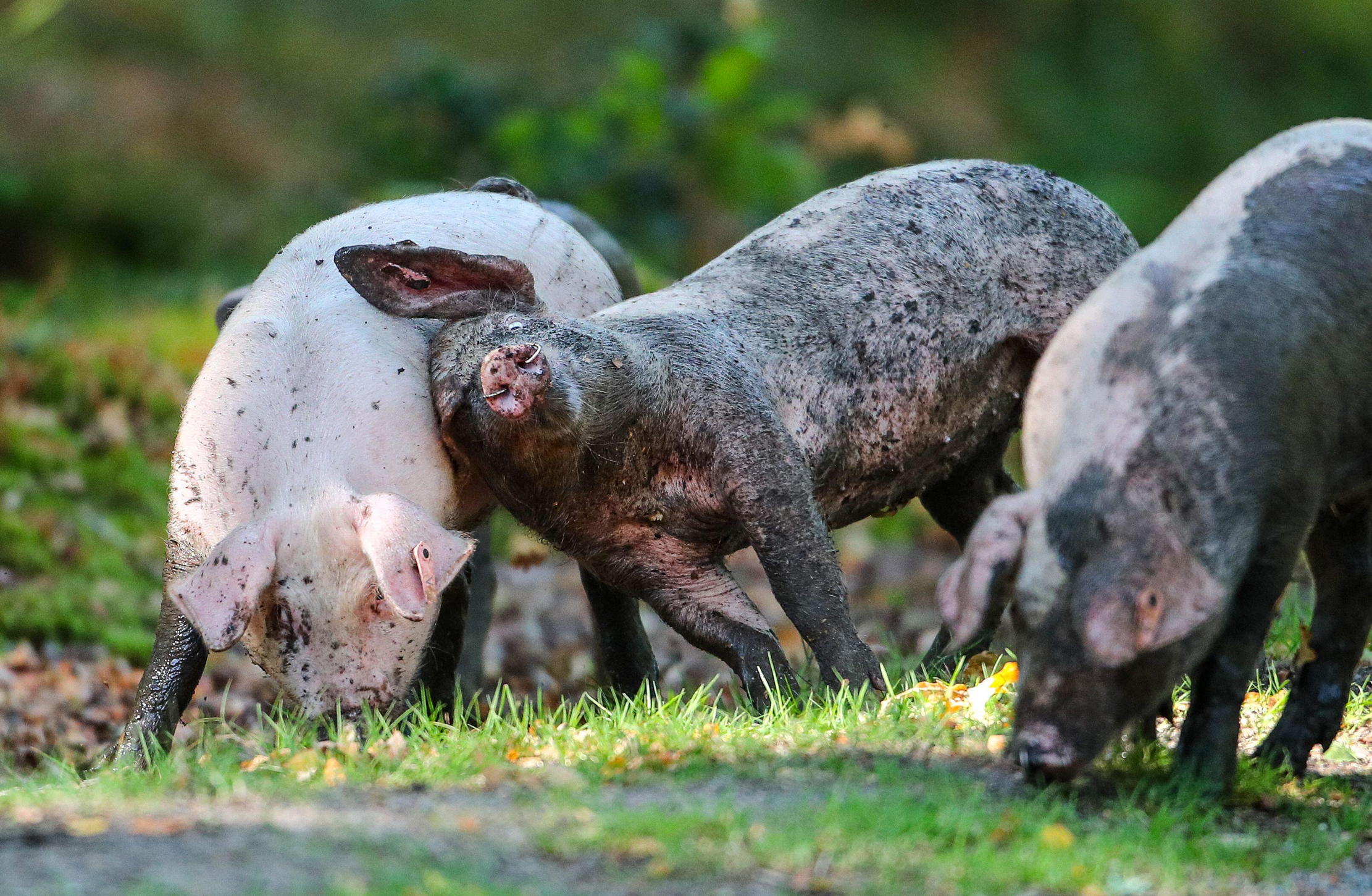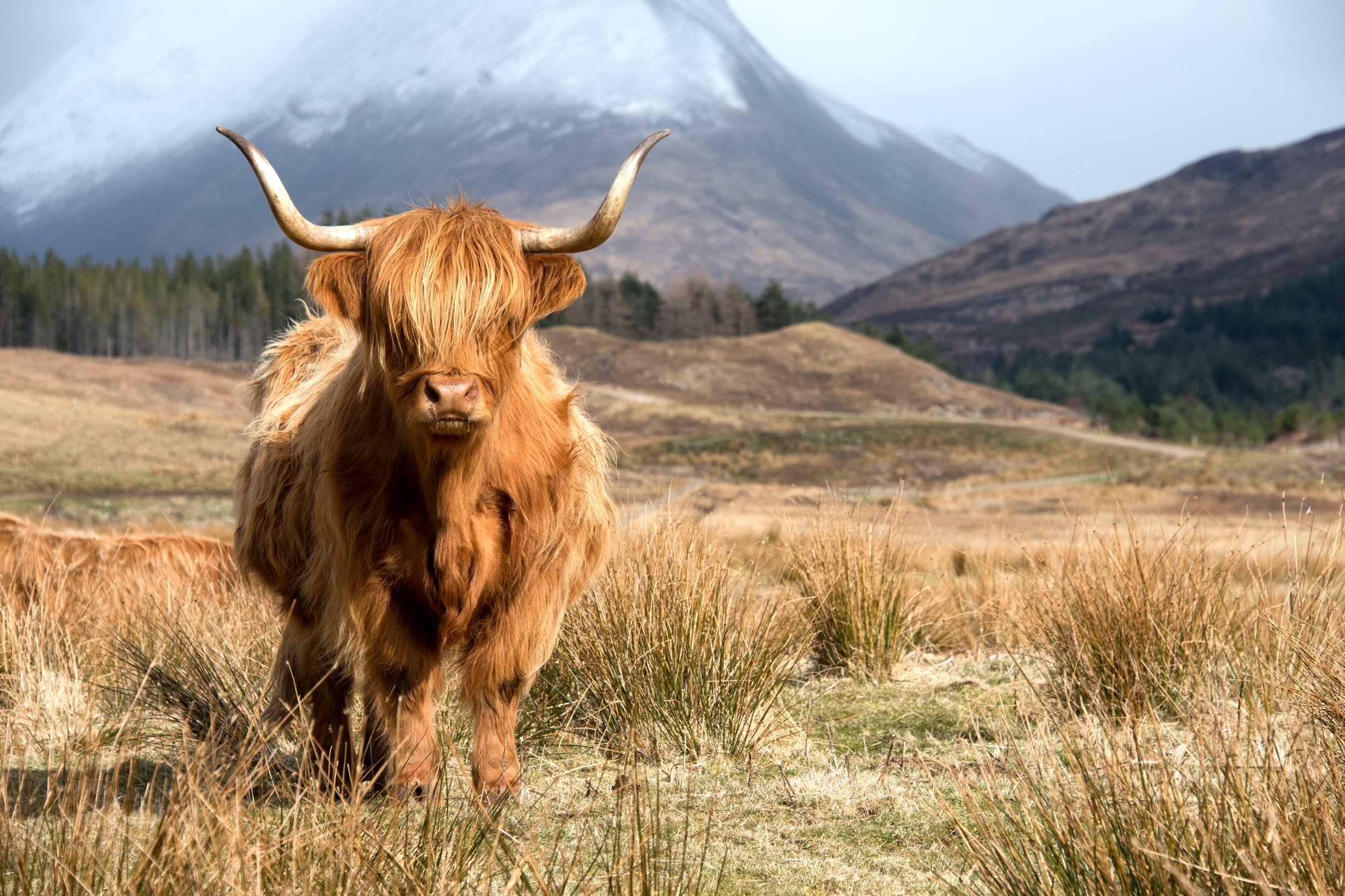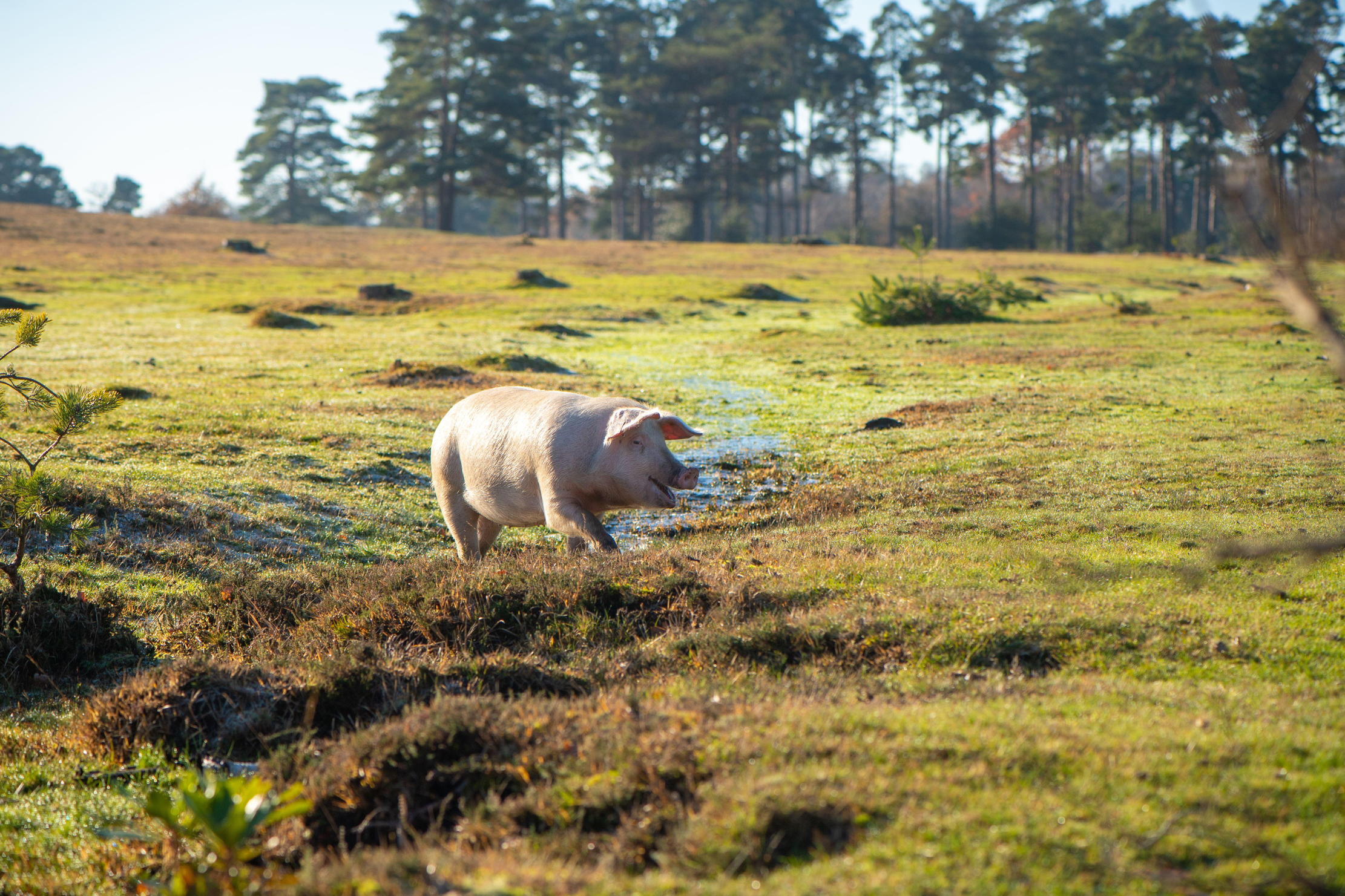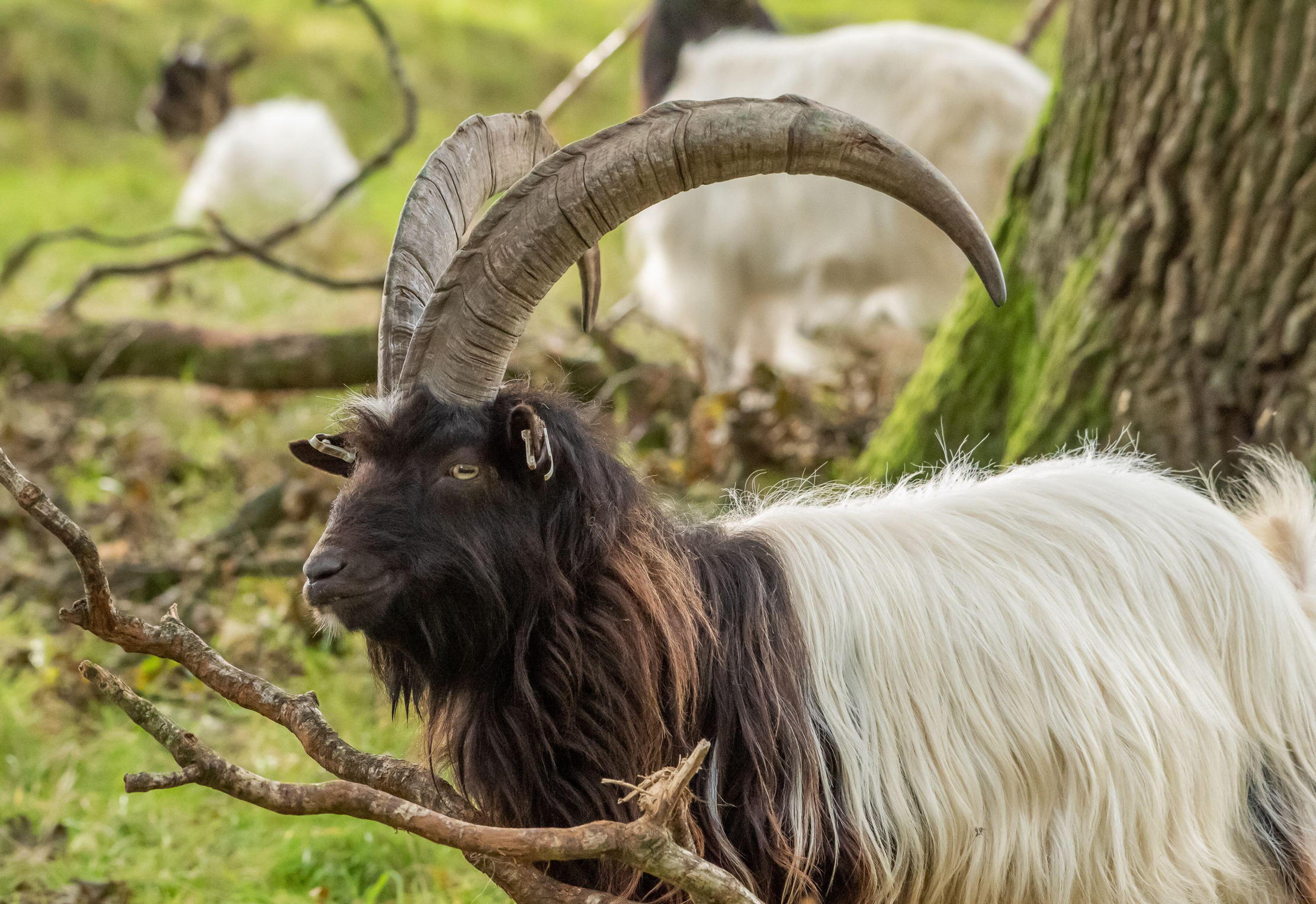No job too big: Britain's native breeds can save our countryside
Britain’s native breeds and their grazing talents are an integral part of the drive to balance food production with biodiversity recovery. We should look closer to home in the quest to re-create the natural habitats of the past


When the rewilding concept became a big thing a couple of decades ago, there was much talk about the introduction of exotic animals and, indeed, one pioneering landowner in Scotland made headlines with the arrival of some rather charming moose.
More recently, there have been suggestions of bringing in huge auroch-type cattle from Spain to trample dense scrub; Mouflon sheep from the Mediterranean have been mooted to tackle rocky thorns; and, for some years, Konik ponies from Poland have been employed on National Trust and Wildlife Trust projects in East Anglia.
The sight of bison on English pastureland — there is currently a herd in a conservation project in Kent woodland — always seems otherworldly; the Derbyshire Wildlife Trust is considering bringing European elk (2m tall and weighing 750kg) to the Willington Wetlands, a small nature reserve created from reclaimed gravel pits near Derby, which is a far cry from the expanses of their usual cooler Scandinavian landscape.
On Diddly Squat Farm in Oxfordshire, the leading players in Clarkson’s Farm take a predictably more prosaic view. In a typically funny spat with Kaleb, in which the long-suffering farm manager accuses his employer of wanting to be nothing more than a ‘hobby farmer’, Jeremy Clarkson retorts that on part of his farm about 490 acres out of 500 are covered in brambles. ‘Put the goats in the brambles, we create more farmland,’ he says logically, observing accurately that, in a stand-off between a bramble bush and a goat, it only takes about five minutes for the bramble to come off worse.
Landowners have a perfect right to keep what livestock they wish, of course, and British breeds have themselves been exported to graze nature reserves, notably Exmoor ponies to the Czech Republic — and who doesn’t thrill to see an unusual beast in a field.
'The most sensible method is to use the breeds that created those habitats in the first place. History is the best starting point, looking at what these animals achieved in the past century'
However, the importation of animals for conservation grazing — that is, grazing to promote biodiversity — when native British ones can do it just as well is galling for the farmers, smallholders and breed societies who work doggedly to preserve these heritage animals and their genes. There may also be a disease risk, as well as a safety issue with imported breeds — bison, elk and potentially aggressive cattle need to be securely fenced off from the public.
The quest for exotica has been a frustration for the Rare Breeds Survival Trust (RBST). ‘There is already in this country pretty much an animal for every job,’ points out RBST chief executive Christopher Price. ‘A mindset change is needed. Everyone goes on about biodiversity recovery, but these [British] animals are part of it. One farm manager said to us that he finds it easier to switch the livestock to fit the landscape rather than the other way around, which we think is the right approach. The starting point is that all these breeds were initially bred to meet the needs of different altitudes and types of landscape.’
Exquisite houses, the beauty of Nature, and how to get the most from your life, straight to your inbox.
RBST conservation adviser Tracy Wathen-Jones agrees: ‘The most sensible method is to use the breeds that created those habitats in the first place. History is the best starting point, looking at what these animals achieved in the past century.’ Her response to the Government’s recent Land Use Frame-work consultation was that the grazing habits of smaller, hardy native breeds, which do not need supplementary feeding and are, therefore, ‘greener’, help fulfil the objective of balancing food production with biodiversity and ecological recovery and climate-change mitigation. ‘These native livestock are not merely a heritage asset — they are practical, resilient tools in land management,’ she said.
The horns of the matter

The iconic Highland cow is popular all over Great Britain.
There are more than 100 conservation projects across the UK using cattle: on bog, rough pasture, sand dunes and in woodland, from the West Country, where there are longhorns at Neroche Forest on the Somerset Blackdowns, Red Devons on Purbeck Heath in Dorset and White Parks at Mapperton, Dorset, to the local Lincoln Reds occupying the Saltfleetby-Theddlethorpe Dunes on the Lincolnshire coast. Cattle can graze longer grasses and herbs and they are less selective than ponies or sheep — they don’t pick off the heads of all the same plants, for instance. This creates a more varied sward, which, in turn, increases plant and insect numbers and diversity, plus their dung attracts more insects and, therefore, more birds.
The famous rewilding of Knepp has been a blueprint for several landowners who have copied the West Sussex estate’s use of the majestic, rare Longhorn, which has the ability to bash out wildlife corridors and pathways through scrub. Highlands are a similarly popular horned breed, often seen hundreds of miles from their homeland, including on Exmoor, the Quantocks and in Snowdonia; Belted Galloways, Shetlands and Red Polls have a lighter tread for more fragile ecologies; and diminutive Dexters (there is a herd at Rutland Water) are the most delicate of all.
Pony power
The pleasingly compact and uniform Exmoor pony comes with a double winter coat, ‘toad eyes’ that protect against hail and an intelligence that makes it ideal for wild places other than its West Country home, including on wetland habitats and the clifftops of Dover, Kent. Of all the native ponies, it is probably the most widely used and its small hooves don’t poach ground too badly.
Ponies are selective browsers, so create mosaics of grazed and untouched vegetation, plus bare patches good for worms, and will slow down rather than clear scrub. Native breeds can adapt their diets: New Forests will eat bracken when it reaches a certain stage, apparently with no ill effect; Fells, Dales and Highlands can cope with coarse reeds and rushes; the rare Eriskay from the Hebrides is coming into its own on the Cumbrian fells.
Who let the pigs out?

One of the hundreds of pigs released across the New Forest each year to devour fallen nuts.
Pigs are underrated in land management and do not, contrary to belief, dig up everything, says the RBST, which observes that the result of their rootling, ‘a mosaic of bare ground, herb-rich pasture and shrub layer’ is ‘almost impossible to replicate’ by other means. Pigs are particularly effective in woodland, allowing light in where bracken and brambles are taking over — The Princess Royal keeps her Gloucester Old Spots in woods — and preparing the ground for regeneration, plus they are ‘an excellent alternative to herbicides and machinery’ in curbing rhododendron takeover. Most famously, up to 600 pigs are used annually in the New Forest in autumn for pannage, the process of hoovering up fallen nuts that are poisonous for ponies and cattle. As are most animals, they are handy seed spreaders, too.
The current enthusiasm is for Tamworths — again, used by Knepp — for their long snouts and for their resemblance to the old forest pigs, but, suggests Miss Wathen-Jones: ‘Most breeds will do the job. It depends on your objectives, but a shorter-snouted pig, such as the Middle White, might be better if you don’t want as much damage.’ The marked Oxford Sandy and Black and Saddleback breeds are equally hardy and don’t suffer from sunburn.
Sheep may safely graze
Ovines get a bad press in some quarters of the environmental media—trenchant campaigner George Monbiot memorably described Britain’s uplands as ‘sheep wrecked’ by ‘woolly maggots’, much to farmer irritation—and will gobble flowers, but, if properly managed, and not too densely stocked, their browsing will do a highly effective job.
They are a reminder that, once, one could tell where one was in Britain by the sheep; the Romney Marsh sheep in Kent, for instance, had a particular ability to feed on wet ground and developed a resistance to foot rot. The Leicestershire and Rutland Wildlife Trust now uses Hebridean sheep to create ‘wigeon lawns’ beside Rutland Water for the birds to feed on in winter.
Britain, with its diversity of topography, boasts more native sheep breeds than any other country; wherever you are — heathland, lowland, moorland, chalk downland — there is a sheep that works. Certainly, the rarer, smaller, more primitive types have come into their own with the fashion for conservation grazing: striking black Hebrideans, the multi-horned Manx Loaghtan, which has the added benefit of being fun to look at, the delightful, multi-coloured Shetland and the fleet-hooved Soay, which can effortlessly scramble around on steep, rocky hillsides — they are used to manage vegetation on the precipitous limestone cliffs of Cheddar Gorge in Somerset.
Honey-coloured Portlands from Dorset, Norfolk Horns and Whitefaced Woodlands from the northern uplands are also flourishing in conservation projects.
Have goat, will travel

The Bagot goat, an expert thorn and bramble clearer.
Conservation grazing — or browsing — has been the saviour of the rare Bagot goat, a striking black-and-white primitive breed whose history in Britain stems from Sir John Bagot’s Blithfield Hall, Staffordshire, in the 14th century. The hardy little goats are not productive in milk or meat terms, but are now being put to good use in clearing brambles and thorns. The herd that grazed the Cromer cliffs in Norfolk for several years is now nibbling with the Norfolk Wildlife Trust in the Brecks.
A diverse habitat will keep a goat busy and interested and, with its narrow muzzle and mobile upper lip, it is more selective than a sheep, plus it is more agile, sure-footed and can reach higher. Bristol City Council has a small herd to manage the land and keep views clear around the Purdown Gun Battery in the city’s Stoke Park. Whatever the job, there’s a native breed to cope.
Kate is the author of 10 books and has worked as an equestrian reporter at four Olympic Games. She has returned to the area of her birth, west Somerset, to be near her favourite place, Exmoor. She lives with her Jack Russell terrier Checkers.
